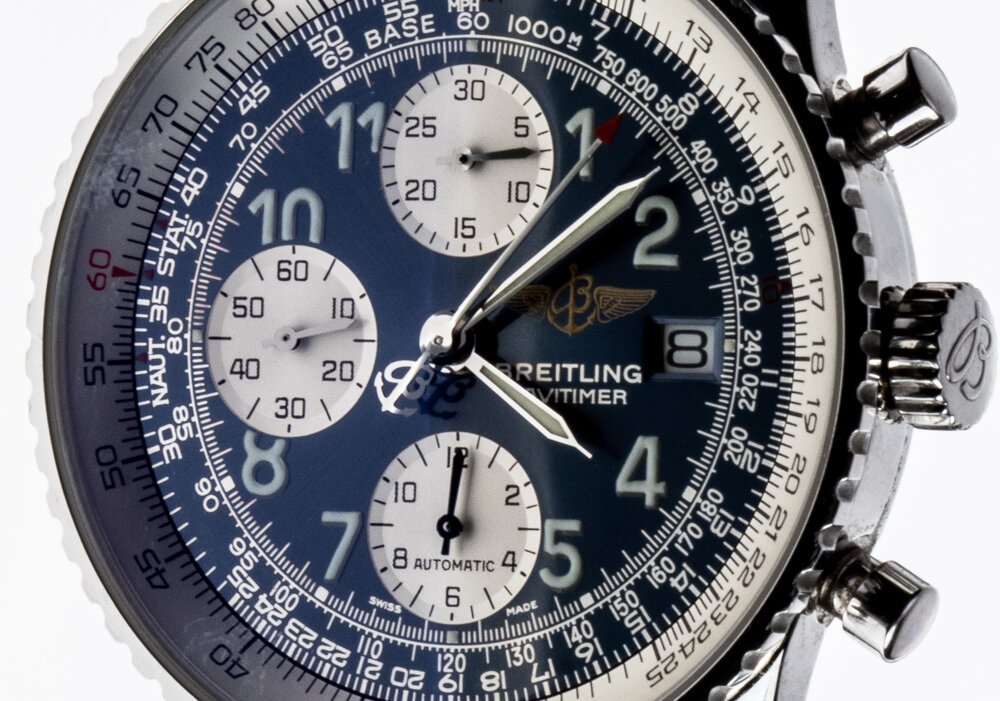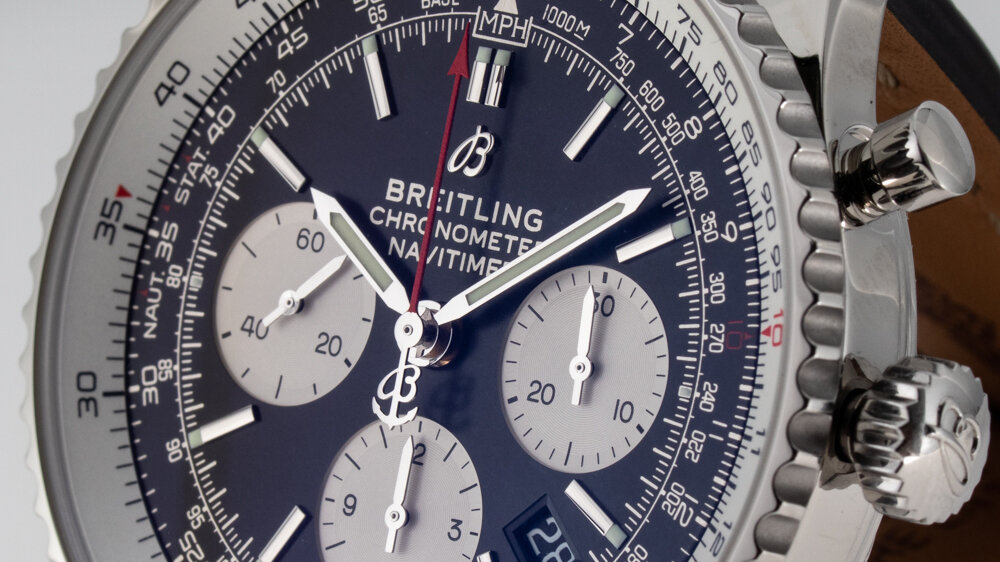The Breitling Navitimer
The Navitimer was first launched in 1952, the examples presented above were manufactured in the mid 1960’s, 2000 and 2020. The Breitling Navitimer evolved from the 1940’s Breitling Chronomat that was the first Breitling chronograph with an integrated rotating slide-rule, intended for engineers and mathematicians. In the early 1950’s Breitling further improved the rotating bezel for aviation purpose and in 1952, the ‘Navitimer’ was released.
Reproduced courtesy of Breitling:
In 1952, Willy Breitling was approached by the renowned US Aircraft Owners and Pilots Association (AOPA) and asked to create a new chronograph for its members. He decided to develop a wrist-worn instrument that would enable pilots to perform all necessary flight calculations, including average speed, distance travelled, fuel consumption, rate of climb or descent, and conversion of miles to kilometres or nautical miles.
At that time, calculations required a logarithmic slide rule. Willy Breitling, therefore, adapted the original logarithmic slide rule of the 1940s Chronomat for aviation purposes and integrated it into a rotating bezel, surrounded by small beads to make it easier to manipulate. The case diameter was fixed at 41 millimetres, which was large for its time – large enough to ensure that all the information provided by the dial would be easy to read.
The readability was further enhanced by oversized Arabic numerals filled with radium that efficiently contrasted with the black dial. As for the name, Navitimer, a combination of navigation and timer. This first Navitimer, designed for the AOPA, did not feature the Breitling brand name or logo on the dial. Its iconic 806 reference was not stamped on the caseback, and the watch was only distributed to AOPA members. However, just a few years later, around 1956, the Navitimer was made available on the open market, featuring the Breitling name above a stylized winged logo and not bearing any reference to the AOPA. It was then that it also received its now-iconic 806 reference. An easy way to spot if an early Navitimer was sold to the AOPA is to look at the logo.
All watches featuring AOPA winged logos, signed “AOPA,” were supplied to the US association, while unsigned stylized winged logos were commercialized through Breitling’s worldwide distribution network. One of the most iconic designs from 1959 was re-issued in 2019 as the first Breitling historical re-edition: the Navitimer Ref. 806 1959 Re-Edition. In the late 1950s, while most of the leading airlines were engaged in the race to offer transatlantic flights, the Navitimer became a mainstay in every cockpit and could be seen on the wrist of every pilot flying overseas, making Breitling the official supplier to world aviation.
While already having enjoyed success for about a decade, the Navitimer received a modern twist in the early 1960s. The dial was changed to feature contrasting subdials in white, an aesthetic modification initially launched on the SuperOcean a few years earlier in 1957, and one that brought modernity and enhanced readability to the Navitimer. Soon after, the bezel evolved from “beaded” to “serrated,” and around 1965, the Navitimer received the famous twin-jet logo made of two superimposed aircraft, while some previous logos also remained in production. The late 1960s brought a new challenge to the watchmaking industry, as the mechanical chronograph was no longer interesting to the younger generation and was threatened by cheaper quartz calibres.
To overcome this challenge, Breitling began the ambitious and visionary development of one of the first automatic mechanical chronograph calibres. Developed in partnership with Heuer-Leonidas and Buren-Hamilton, the Breitling Chrono-Matic was launched on March 3, 1969, and offered two timepieces in one – an automatic mechanical watch and a chronograph, meaning people no longer had to choose between the two. The same year, Breitling pushed design boundaries even further as the Navitimer case grew to an unprecedented size of 48 millimetres.
Though the watch was much larger than others on the market at the time, it's very short lugs made it comfortable to wear and ensured its success among a younger, more urban, and trendier clientele. Two new timepieces were developed: an automatic version equipped with the Chrono-Matic calibre (Reference 1806) and a hand-wound version (Reference 816). Both were equipped with the newly patented waterproof rotating bezel. The classic and successful 41-millimetre Navitimer remained in production and was given a modern and useful date indication in an automatic (Reference 8806) and a hand-wound version (Reference 7806). Since then, the Navitimer has been a pillar of the Breitling collection and has been fitted with the brand’s most complicated movements, including the Breitling Manufacture Caliber 01 in 2010 and a split-second chronograph calibre in 2017. With a career spanning more than 65 years, the Navitimer is the most iconic Breitling ever made.
To learn more about Breitling



